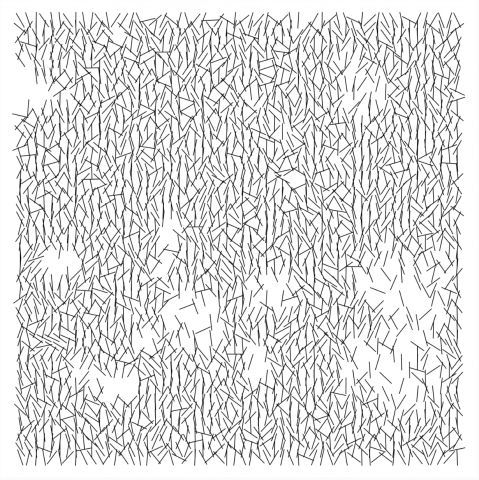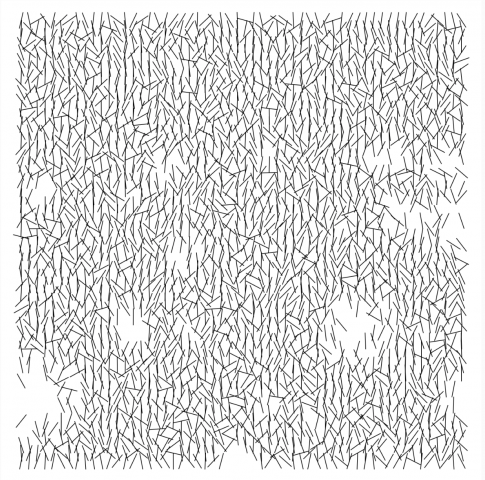Observations:
- The composition is square.
- The composition consists of black lines on a white background
- All the lines are the same length.
- The lines have randomized slopes, but tend towards vertical.
- There are margins that are about the length of two lines.
- The height of the rows and width of the columns is half the length of the lines.
- There are gaps where multiple lines are missing from a section of the grid, but the number of lines and the shape and position of the gap is fairly random.
- About 5-10% of the grid consists of gaps.
- There exist lines on the grid within gaps such that they are not adjacent to any other lines.
- There are 56 rows and 56 columns.
So I first did the grid of randomized lines that tend to be vertical, and then I wanted to do a weird recursive function to generate the voids as an array of points by starting with one point and then including adjacent points based on a probability. But that was really complicated, so then I saw someone talking about using just a random radius and making points in that radius voids, and I tried that. I added a weighted probability that those points wouldn't actually be voids, based on how far from the center of the circle void they were. That made the edges of my circles more fuzzy. I added a couple other things to add fuzziness. It's still definitely not the same program as Molnar's. Hers is very complex from what I can see. It's really impressive that she did that; it definitely seems like some kind of noise function, and mine is pretty far from that. When I squint I still just see a bunch of circles in mine.


